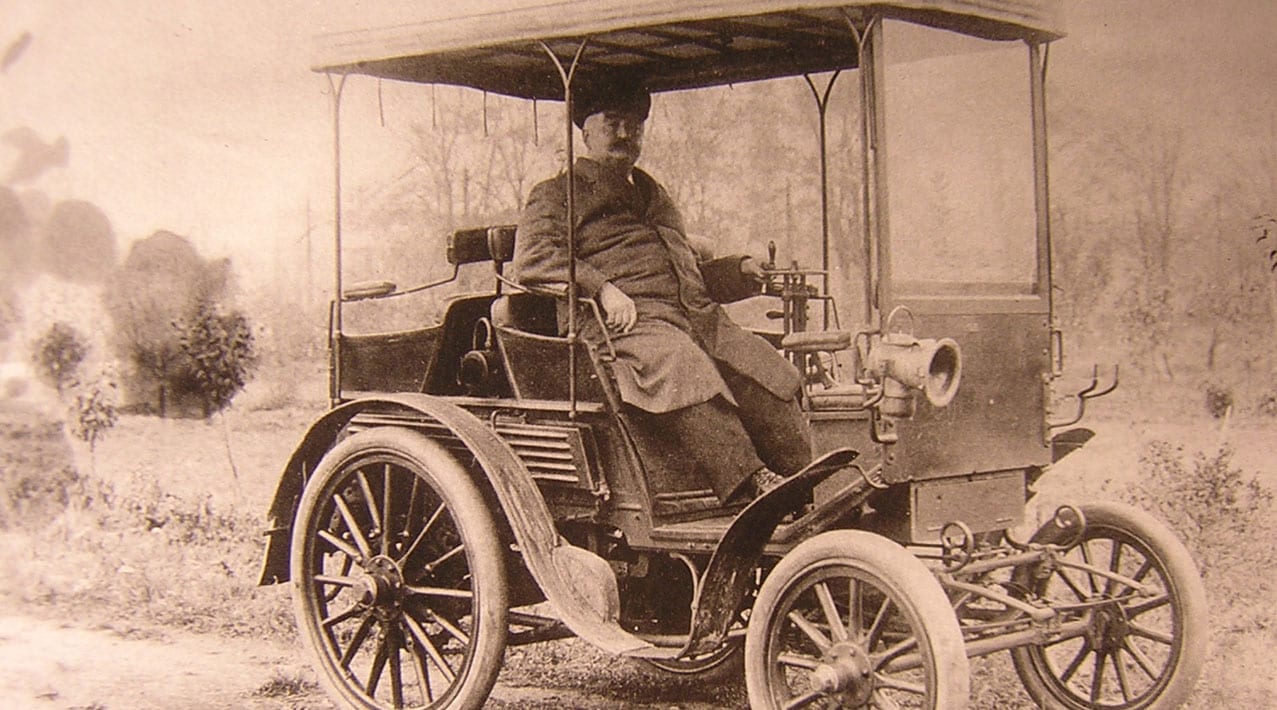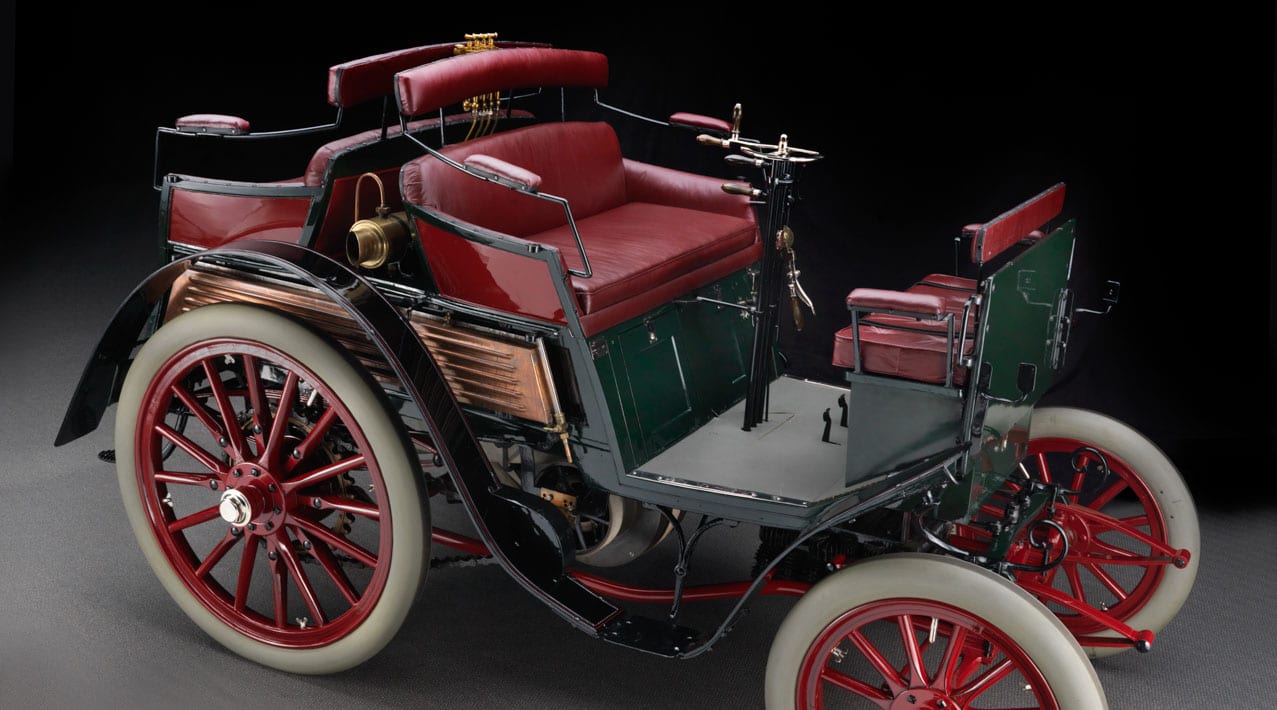Tech Specs
Two-cylinder, four-stroke, opposed engine. 2690 cc, 10 hp at 920 rpm
Before/After
1901 Benz


About the 1901 Benz Dos-à-Dos
At the end of the 19th century, Carl Benz was the largest automobile manufacturer in the world. Two thousand automobiles had been produced in his Mannheim factory over the past decade, and Benz cars were in use all over the world.
Sales for 1900 totaled 603 cars; 341 were sold outside Germany. The stereotypical “prophet without honor”, Benz had sold his first cars in Paris and made significant sales in America before Germany woke up to the automotive age. When the display car was sold to Freiburg industrialist Julius Oswald Römmele, it was purportedly the first automobile in town. Obviously Römmele had a special fondness for the car because he kept it long after it became obsolete.
In 1936, the fiftieth anniversary of the first automobiles of Carl Benz and Gottlieb Daimler, whosetwo companies had merged a decade before, this Benz was selected for exhibition. By then the Third Reich was intruding with increasing intensity into private industry. Just that January, in fact, Daimler-Benz AG had survived a government attempt to take control.
Because Hitler, an automobile enthusiast, was obsessed with the glorification of German history, Römmele’s car was commandeered after the celebration. As war clouds gathered, it was moved to a salt mine near Dresden, a safekeeping measure afforded such other German cars as the all-conquering Mercedes- Benz and Auto Union GP racers.
When peace came, Dresden was in East Germany and the Römmeles lost track of the car. Not until the Berlin Wall fell in 1989 could the family look for their Benz. It was found on display in Dresden’s Verkehrsmuseum. Nearly five years of red tape later, the car was returned to the Römmele family where it remained until acquired by the Collier Automotive Museum in 1999. Any early Benz is rare. Its participation in a century of world history makes this Benz transcendent.
Photos – Peter Harholdt







